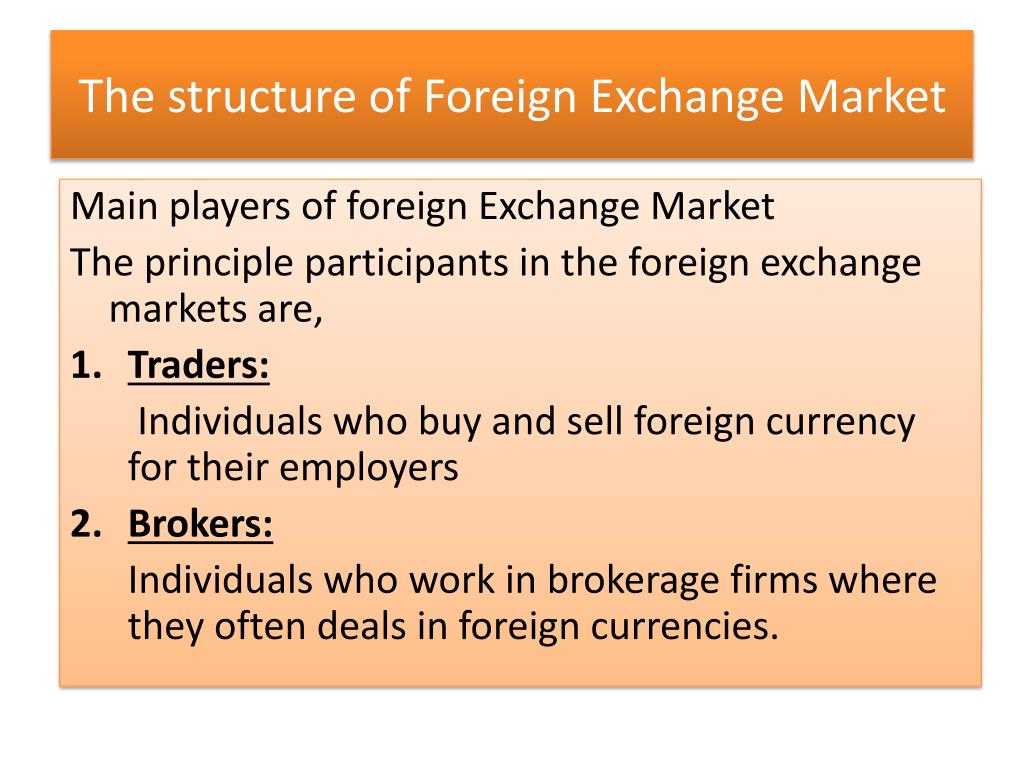Introduction about foreign exchange market – Embark on an enlightening journey into the realm of the foreign exchange market, where currencies dance and global economies intertwine. From its fundamental concepts to its profound impact on international trade and investment, this comprehensive guide unravels the intricacies of this dynamic marketplace, empowering you with the knowledge to navigate its complexities.
As we delve deeper into the world of foreign exchange, we will explore the key players, factors influencing exchange rates, and innovative trading methods that shape this ever-evolving landscape.
Overview of Foreign Exchange Market
Foreign exchange, also known as forex, is the exchange of currencies from one country to another. It plays a vital role in international trade, allowing businesses and individuals to buy and sell goods and services from different countries.
Major Participants in the Foreign Exchange Market
The foreign exchange market involves various participants, including:
- Central Banks: Regulate the money supply and manage exchange rates.
- Commercial Banks: Facilitate foreign exchange transactions for their customers.
- Investment Banks: Trade currencies for their clients and speculate on currency movements.
- Corporations: Exchange currencies to conduct international business and manage currency risk.
- Retail Traders: Trade currencies independently, often through online platforms.
Types of Foreign Exchange Transactions
Foreign exchange transactions can take various forms, including:
- Spot Transactions: Immediate exchange of currencies at the current market rate.
- Forward Transactions: Agreements to exchange currencies at a specified rate on a future date.
- Currency Swaps: Simultaneous exchange of two currencies with an agreement to reverse the transaction at a later date.
- Currency Options: Contracts that give the holder the right, but not the obligation, to buy or sell a specified amount of currency at a set price within a specified time frame.
Key Players in the Foreign Exchange Market
The foreign exchange market involves various participants playing distinct roles in facilitating currency exchange and shaping market dynamics. Let’s explore the primary players and their functions.
Banks
Banks are the dominant players in the forex market, acting as intermediaries between buyers and sellers of currencies. They provide liquidity to the market, facilitate currency exchange transactions, and offer various financial services to their clients.
Brokers
Brokers serve as intermediaries between traders and the market. They provide platforms for traders to execute trades, offer market analysis and trading tools, and charge commissions or spreads on executed trades.
Corporations
Corporations engage in foreign exchange transactions for various business purposes, such as importing and exporting goods, making investments abroad, and managing their international operations.
Central Banks, Introduction about foreign exchange market
Central banks are government institutions responsible for managing monetary policy and overseeing the financial system. They intervene in the forex market to influence exchange rates, manage inflation, and maintain economic stability.
Obtain direct knowledge about the efficiency of foreign exchange market demand and supply through case studies.
Other Participants
Other participants in the forex market include hedge funds, investment funds, and individual traders. Hedge funds and investment funds engage in currency trading as part of their investment strategies, while individual traders speculate on currency movements for profit.
Interrelationships
These players interact with each other to facilitate currency exchange and influence market conditions. Banks provide liquidity to brokers, who in turn offer trading platforms to corporations and individual traders. Central banks monitor and regulate the market, while hedge funds and investment funds add depth and liquidity to the market.
Factors Influencing Foreign Exchange Rates: Introduction About Foreign Exchange Market

Foreign exchange rates are determined by a complex interplay of economic, political, and social factors. Understanding these factors is crucial for businesses, investors, and individuals engaged in international trade and finance.
Economic Factors
- Economic Growth: Strong economic growth in a country tends to appreciate its currency, as it increases demand for its goods and services.
- Inflation: Higher inflation can lead to currency depreciation, as it erodes the value of the currency over time.
- Interest Rates: Higher interest rates in a country can attract foreign capital, leading to currency appreciation.
- Balance of Payments: A country with a trade surplus tends to have a stronger currency, while a deficit can lead to depreciation.
Political Factors
- Political Stability: Political uncertainty and instability can lead to currency depreciation, as investors seek safer havens.
- Government Policies: Government policies, such as fiscal and monetary measures, can influence foreign exchange rates.
- International Relations: Diplomatic tensions or conflicts between countries can impact their respective currencies.
Social Factors
- Culture and Customs: Cultural preferences and consumption patterns can influence demand for goods and services, thereby affecting foreign exchange rates.
- Population Demographics: Changes in population size, age distribution, and labor force can impact economic growth and inflation, which in turn influence foreign exchange rates.
- Technological Advancements: Technological innovations can disrupt industries, affecting economic growth and demand for currencies.
Supply and Demand
The foreign exchange market, like any other market, is driven by the forces of supply and demand. When demand for a currency exceeds supply, its value tends to appreciate. Conversely, when supply exceeds demand, the currency depreciates.
Central Bank Interventions
Central banks play a significant role in influencing foreign exchange rates through various interventions, such as:
- Foreign Exchange Intervention: Buying or selling foreign currencies to directly impact their exchange rates.
- Interest Rate Adjustments: Changing interest rates to influence capital flows and currency demand.
- Currency Controls: Imposing restrictions on the purchase or sale of foreign currencies to stabilize exchange rates.
Methods of Trading Foreign Exchange
Foreign exchange trading involves buying and selling currencies in the global marketplace. Traders utilize various methods to facilitate these transactions, each with its own advantages and disadvantages. This section delves into the different methods employed in foreign exchange trading.
Learn about more about the process of foreign exchange market outlook in the field.
Spot Market
The spot market is where currencies are traded for immediate delivery, typically within two business days. It is the most straightforward and commonly used method of foreign exchange trading.
Advantages:
Explore the different advantages of foreign exchange market structure meaning that can change the way you view this issue.
- Immediate settlement of transactions
- High liquidity and tight spreads
Disadvantages:
- Limited flexibility for managing risk
- Exposure to currency fluctuations before settlement
Example: A trader buys EUR/USD in the spot market, receiving euros in exchange for US dollars within two business days.
Forward Market
The forward market allows traders to buy or sell currencies at a predetermined exchange rate for future delivery, typically ranging from one month to several years. This method provides protection against currency fluctuations.
Advantages:
- Locking in future exchange rates
- Managing currency risk over extended periods
Disadvantages:
- Less liquidity than the spot market
- Potential for counterparty risk
Example: A company plans to import goods from Europe in six months and enters into a forward contract to buy euros at a fixed exchange rate.
Options Market
The options market allows traders to purchase contracts that give them the right, but not the obligation, to buy or sell a currency at a specified exchange rate within a specific time frame. This method provides flexibility and the potential for profit.
Advantages:
- Flexibility to manage risk and speculate on exchange rates
- Limited potential for losses
Disadvantages:
- Requires specialized knowledge and experience
- Premium costs associated with purchasing options
Example: A trader buys a call option on EUR/USD, giving them the right to buy euros at a fixed exchange rate within the next month.
Risks and Challenges in Foreign Exchange Trading

Foreign exchange trading involves inherent risks and challenges that traders must be aware of to make informed decisions and mitigate potential losses. Understanding these risks and implementing effective risk management strategies are crucial for success in the foreign exchange market.
The primary risks in foreign exchange trading include market volatility, currency fluctuations, leverage, and geopolitical events. Market volatility refers to the rapid and unpredictable changes in currency prices, which can lead to significant losses if not managed properly. Currency fluctuations can also impact profitability, as the value of one currency relative to another can change unexpectedly due to economic, political, or other factors.
Leverage
Leverage, while providing the potential for higher returns, also magnifies both profits and losses. Traders should use leverage cautiously, as it can lead to substantial losses if the market moves against their positions.
Geopolitical Events
Geopolitical events, such as wars, elections, and natural disasters, can significantly impact currency values. Traders need to stay informed about global events and their potential impact on the foreign exchange market.
Mitigating Risks
To mitigate these risks, traders should implement proper risk management strategies, including setting stop-loss orders to limit potential losses, diversifying their portfolio across different currency pairs, and managing their leverage exposure. It is also essential to understand market dynamics and volatility to make informed trading decisions.
Innovations and Advancements in the Foreign Exchange Market
The foreign exchange market has undergone a significant transformation due to technological advancements. Electronic trading platforms have revolutionized the way currencies are traded, increasing efficiency and accessibility.
Electronic Trading Platforms
Electronic trading platforms have replaced traditional over-the-counter (OTC) trading methods, offering numerous advantages:
– Increased efficiency: Automated execution of trades eliminates the need for manual processing, reducing time and costs.
– Improved liquidity: Centralized platforms aggregate orders from multiple participants, creating a larger pool of liquidity and tighter spreads.
– Enhanced transparency: Electronic platforms provide real-time market data, allowing traders to make informed decisions.
Emerging Trends and Innovations
The foreign exchange industry continues to evolve, with new technologies and innovations emerging:
– Blockchain technology: Blockchain-based platforms aim to enhance security, transparency, and settlement efficiency in foreign exchange transactions.
– Artificial intelligence (AI): AI-powered algorithms analyze market data and provide traders with insights and trading recommendations.
– Mobile trading: Mobile trading apps allow traders to access the foreign exchange market from anywhere with an internet connection.
These advancements have transformed the foreign exchange market, making it more accessible, efficient, and innovative.
Case Studies and Examples
The foreign exchange market provides ample opportunities for businesses and individuals to mitigate currency risk and optimize profits. Case studies and examples offer valuable insights into the practical applications of foreign exchange trading.
Businesses Utilizing Foreign Exchange
- Example: A multinational corporation with operations in multiple countries regularly purchases raw materials from suppliers in various currencies. To avoid exchange rate fluctuations impacting its profit margins, the company uses forward contracts to lock in exchange rates for future transactions.
- Lesson: Forward contracts allow businesses to hedge against currency risk and secure predictable costs for cross-border transactions.
Individuals Benefiting from Foreign Exchange
- Example: An individual planning a trip abroad exchanges their home currency for the destination currency at a favorable exchange rate. By monitoring currency fluctuations, they can optimize the value of their funds.
- Lesson: Individuals can benefit from currency fluctuations by exchanging currencies at opportune times to maximize their purchasing power.
Managing Currency Risk in International Trade
- Example: An exporter selling goods to an overseas customer invoices in the customer’s local currency. By doing so, the exporter eliminates the risk of exchange rate fluctuations affecting the transaction’s profitability.
- Lesson: Invoicing in the customer’s currency allows businesses to transfer currency risk to the customer, ensuring stable revenue streams.
Optimizing Profits through Currency Speculation
- Example: A currency trader analyzes market trends and identifies a currency pair with a favorable risk-reward ratio. They execute a trade to profit from the anticipated appreciation or depreciation of one currency against the other.
- Lesson: Currency speculation can be a lucrative strategy for those with the knowledge and expertise to navigate the complexities of the foreign exchange market.
Closing Summary

In conclusion, the foreign exchange market stands as a vital artery in the global financial system, facilitating international trade, investment, and risk management. By understanding its intricacies and leveraging its opportunities, individuals and businesses can navigate the complexities of global currency dynamics and optimize their financial strategies.
